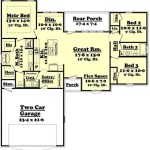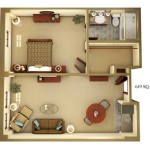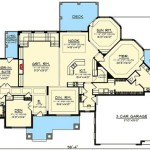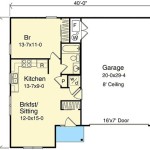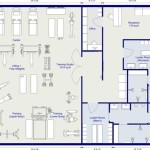Duplex Plans For Small Lots: Maximizing Space and Investment
The increasing demand for housing, coupled with limited available land, particularly within urban and suburban areas, has led to a growing interest in efficient and space-saving residential designs. Duplex plans, designed specifically for small lots, present a viable solution for homeowners, developers, and investors seeking to maximize land use and potentially generate rental income. These plans require careful consideration of design principles, regulatory compliance, and construction techniques to ensure functionality, aesthetic appeal, and long-term value.
Duplexes, by definition, are residential buildings containing two separate living units within a single structure. These units can be arranged side-by-side, stacked vertically, or configured in other space-efficient layouts. When adapted for small lots, duplex plans necessitate strategic design choices to optimize space utilization, maintain privacy for each unit, and adhere to local zoning requirements. The architectural style, material selection, and landscaping are also important factors to consider to create a cohesive and attractive property.
The success of a duplex project on a small lot hinges on a comprehensive understanding of the advantages, challenges, and planning considerations involved. This article examines key aspects of duplex plans tailored for small lots, offering insights into design strategies, regulatory compliance, and practical considerations for achieving successful development.
Optimizing Space with Innovative Design Strategies
Designing a functional and appealing duplex on a small lot requires a focus on maximizing space efficiency without compromising livability. This involves careful consideration of the floor plan, interior layout, and exterior design elements. Several key strategies can be employed to achieve this goal.
Firstly, a compact and efficient floor plan is crucial. Open-concept living areas, integrating the kitchen, dining, and living room into a single, flowing space, can create a sense of spaciousness. Utilizing vertical space is another effective strategy. Incorporating features such as vaulted ceilings, lofts, or strategically placed skylights can enhance the feeling of height and openness within the units. Staircases should be designed to be as compact as possible, potentially incorporating storage solutions underneath.
Secondly, minimizing hallways and unused spaces is essential. Hallways consume valuable square footage that could be better utilized for living spaces. Careful planning can reduce the need for long corridors by strategically placing rooms and optimizing circulation paths. Built-in storage solutions, such as custom cabinetry and shelving, can also eliminate the need for bulky furniture and maximize storage capacity within each unit.
Thirdly, exterior design elements play a significant role in maximizing the perceived space and functionality of the duplex. Vertical cladding, such as siding or brick, can visually elongate the building, making it appear taller. Large windows and strategically placed balconies or patios can create a connection between the interior and exterior, expanding the living space and providing natural light and ventilation. Shared outdoor spaces, such as a common backyard or garden, can also enhance the overall appeal and usability of the property.
The orientation of the building on the lot is also a critical consideration. Maximizing natural light and ventilation can reduce the need for artificial lighting and air conditioning, contributing to energy efficiency and cost savings. Consider the prevailing winds and sun angles when positioning the duplex to optimize natural climate control. Careful landscaping can also enhance privacy and create a visual buffer between the two units.
Furthermore, universal design principles can be incorporated to enhance accessibility and adaptability for residents of all ages and abilities. Features such as wider doorways, ramped entrances, and accessible bathrooms can make the duplex more appealing to a wider range of potential tenants or owners.
Navigating Regulatory Compliance and Zoning Requirements
Developing a duplex on a small lot requires a thorough understanding of local zoning ordinances and building codes. Compliance with these regulations is essential to ensure the project is legally permissible and meets safety standards. Failing to adhere to these requirements can result in costly delays, fines, or even the rejection of the project.
Zoning regulations dictate the permissible land uses, building height, setbacks, and density within specific areas. Before commencing any design work, it is crucial to consult with local planning authorities to determine the specific zoning requirements for the property. Key considerations include minimum lot size, minimum lot width, maximum building height, and required setbacks from property lines.
Building codes establish minimum standards for construction, including structural integrity, fire safety, and energy efficiency. Compliance with these codes is essential to ensure the safety of the building occupants and the long-term durability of the structure. It is crucial to engage with qualified architects and engineers who are familiar with local building codes and can ensure that the design and construction meet all required standards.
In addition to zoning regulations and building codes, there may be other regulatory requirements that need to be addressed. These may include environmental regulations, such as stormwater management and erosion control measures, as well as accessibility requirements under the Americans with Disabilities Act (ADA). It is important to identify and address these requirements early in the planning process to avoid potential delays or complications.
Obtaining the necessary permits and approvals is a critical step in the development process. This typically involves submitting detailed plans and specifications to the local planning authority for review. The review process can take several weeks or months, depending on the complexity of the project and the workload of the planning department. It is important to be patient and responsive to any requests for additional information or revisions.
Engaging with a qualified land-use attorney or consultant can be beneficial in navigating the regulatory landscape and obtaining the necessary approvals. These professionals can provide expert guidance on zoning regulations, building codes, and other regulatory requirements, and can help to streamline the permitting process.
Addressing Practical Considerations for Small Lot Duplex Construction
Constructing a duplex on a small lot presents unique challenges that require careful planning and execution. These challenges relate to access, site logistics, and construction techniques. Addressing these practical considerations effectively is essential to ensure a successful and cost-effective construction project.
Limited access to the site can be a significant challenge, particularly in densely populated urban areas. Ensuring that construction vehicles can access the site safely and efficiently is crucial to minimize delays and disruptions. This may involve coordinating with local authorities to obtain temporary street closures or parking permits. Proper planning of material deliveries is also essential to avoid congestion and delays.
Site logistics require careful management to minimize the impact on the surrounding neighborhood. This includes managing noise levels, dust control, and waste disposal. Communicating with neighbors and addressing their concerns proactively can help to maintain positive relationships and avoid potential disputes. Implementing best management practices (BMPs) for stormwater management and erosion control is also essential to protect the environment.
Construction techniques may need to be adapted to suit the limited space and access constraints. For example, prefabricated components or modular construction can be used to reduce the amount of on-site construction time and minimize disruption. Careful planning of the construction sequence is also essential to ensure that materials and equipment are available when needed and that the work is completed efficiently.
Managing the budget and schedule is critical to the success of any construction project, but it is particularly important when building on a small lot. Unexpected delays or cost overruns can quickly escalate due to the limited space and access constraints. Engaging with experienced contractors and subcontractors who are familiar with small lot construction is essential to ensure that the project is completed on time and within budget.
Effective communication and coordination among all parties involved is essential to ensure a smooth and successful construction process. This includes the owner, architect, engineer, contractor, subcontractors, and local authorities. Regular meetings and clear communication channels can help to identify and address potential problems early on and prevent costly delays.
Finally, consider engaging a project manager to oversee the construction process. A project manager can help to ensure that the project is completed on time, within budget, and to the required quality standards. They can also act as a liaison between the owner, contractor, and other stakeholders, simplifying the communication process and ensuring that everyone is working towards the same goals.

Duplex House Plan For The Small Narrow Lot 67718mg Architectural Designs Plans

Narrow Lot Duplex Plan J1690d B

3 Bed Craftsman Narrow Lot Duplex House Plan 62658dj Architectural Designs Plans

Duplex House Plan For The Narrow Lot 42586db Architectural Designs Plans

Narrow Lot Duplex J1690 15d

Plan 2080 Bi Level Duplex Small Or Narrow Lot

Duplex J1690d Plansource Inc

Duplex House Plan For Your Narrow Lot 919 Sq Ft 2 Bed Units 38006lb Architectural Designs Plans

Narrow Lot Duplex Plan Multi Unit Traditional 3 Beds Per

Duplex House Plan For The Small Narrow Lot

